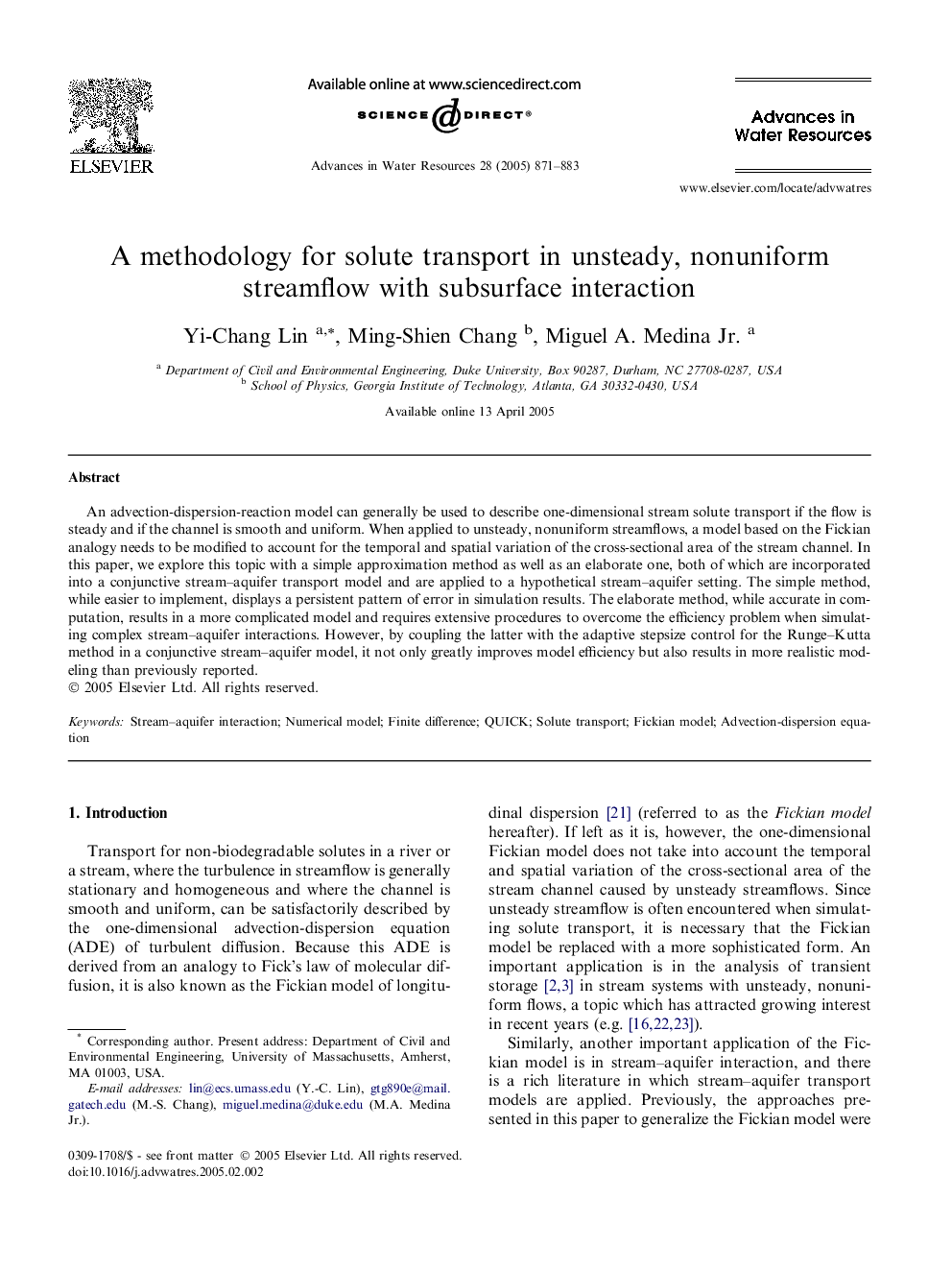| Article ID | Journal | Published Year | Pages | File Type |
|---|---|---|---|---|
| 9476812 | Advances in Water Resources | 2005 | 13 Pages |
Abstract
An advection-dispersion-reaction model can generally be used to describe one-dimensional stream solute transport if the flow is steady and if the channel is smooth and uniform. When applied to unsteady, nonuniform streamflows, a model based on the Fickian analogy needs to be modified to account for the temporal and spatial variation of the cross-sectional area of the stream channel. In this paper, we explore this topic with a simple approximation method as well as an elaborate one, both of which are incorporated into a conjunctive stream-aquifer transport model and are applied to a hypothetical stream-aquifer setting. The simple method, while easier to implement, displays a persistent pattern of error in simulation results. The elaborate method, while accurate in computation, results in a more complicated model and requires extensive procedures to overcome the efficiency problem when simulating complex stream-aquifer interactions. However, by coupling the latter with the adaptive stepsize control for the Runge-Kutta method in a conjunctive stream-aquifer model, it not only greatly improves model efficiency but also results in more realistic modeling than previously reported.
Keywords
Related Topics
Physical Sciences and Engineering
Earth and Planetary Sciences
Earth-Surface Processes
Authors
Yi-Chang Lin, Ming-Shien Chang, Miguel A. Jr.,
